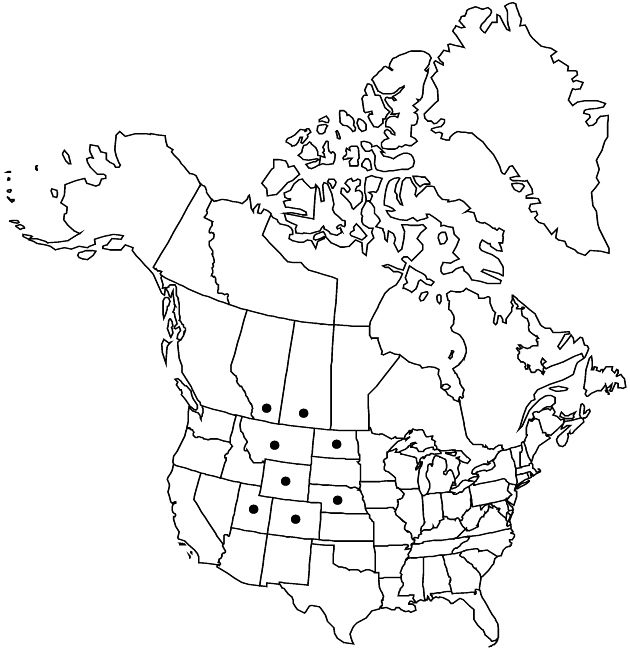Stephanomeria runcinata
Trans. Amer. Philos. Soc., n. s. 7: 428. 1841.
Perennials, 10–20 (–25) cm (rhizomes stout). Stems erect or ascending, glabrous or weakly scabrous-puberulent. Leaves usually withered at flowering; basal blades narrowly lanceolate, markedly runcinate, 3–7 cm, margins pinnately lobed (faces glabrous or weakly scabrous-puberulent); cauline much reduced, bractlike. Heads borne singly on branch tips. Peduncles 10–50 mm (usually minutely bracteolate). Calyculi of appressed bractlets (unequal, lengths to 1/2 phyllaries). Involucres 9–12 (–13) mm (phyllaries 5–6, glabrous). Florets 5–6. Cypselae tan, 3–5 mm, faces smooth to slightly bumpy, grooved; pappi of 15–25, white bristles (persistent), wholly plumose. 2n = 16.
Phenology: Flowering June–Sep.
Habitat: Open sandy places, eroded siltstones, clay flats, alkali soils
Elevation: 600–1800 m
Distribution

Alta., Sask., Colo., Mont., Nebr., N.Dak., Utah, Wyo.
Discussion
Stephanomeria runcinata grows in the upper Great Plains and adjacent intermontane valleys.
Selected References
None.
Lower Taxa
"fine" is not a number.